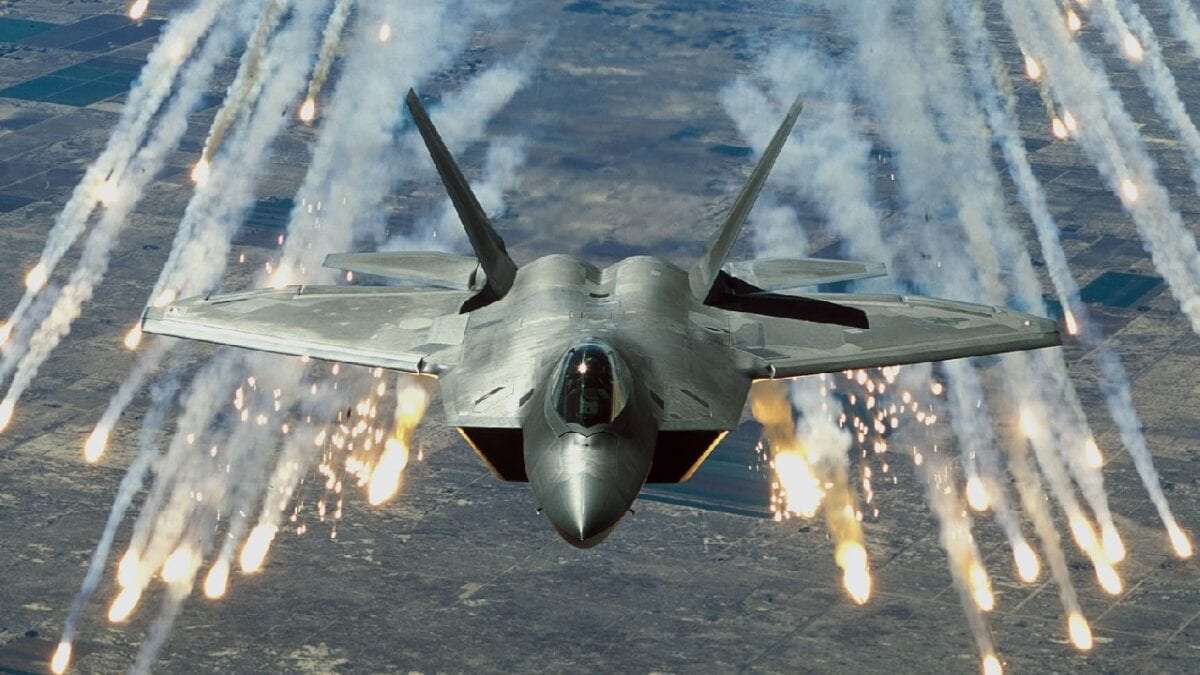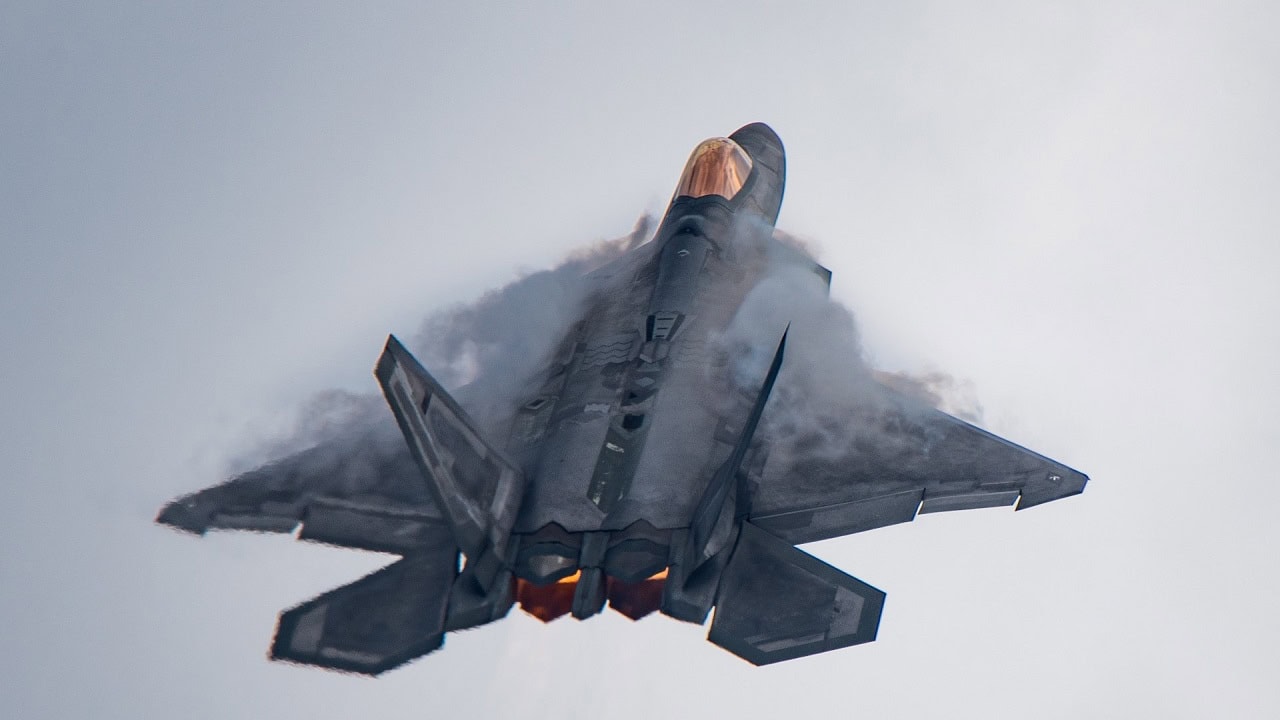The U.S. has met Russian harassment of American drones in Syria by deploying the F-22 Raptor stealth fighter, the most advanced fighter in the U.S. Air Force’s inventory. Russian pilots have become increasingly brazen in recent months.
“Russian Forces’ unsafe and unprofessional behavior is not what we expect from a professional air force. Their regular violation of agreed upon airspace deconfliction measures increases the risk of escalation or miscalculation,” Gen. Michael “Erik” Kurilla, commander of U.S. Central Command, said in a June 14 press release. “Alongside our partners and allies, we are committed to improving the security and stability in the region.”
Central Command noted that the F-22s Langley Air Force Base, Va.’s 94th Fighter Squadron were reminding the Russians how they could easily be redeployed at a moment’s notice.
Why F-22? Russian and American Aircraft Increasingly in Conflict
Fighters from both nations have shared the skies over Syria for many years in the fight against ISIS. U.S. Central Command made the announcement on June 14 that the stealth jets were on their way. The U.S. sent them to the United Arab Emirates (UAE) last year in response to missile attacks by Iranian-backed Houthis in Yemen.
Russia has largely discarded the deconfliction agreement that kept U.S. and Russian pilots from taking aim at each other. The U.S. has gone out of its way to avoid direct conflict since then Defense Secretary James Mattis ordered American aircraft to bomb Wagner mercenaries as they approached U.S. forces in eastern Syria in 2018. That attack left 300 mercenaries dead.
The Russians have been “increasingly bellicose in how they’re approaching us,” Lt. Gen. Alexus Grynkewich, who leads Air Forces Central Command, told Defense One in April. “They’re maneuvering aggressively against us when our protocols would say we’re supposed to stay… several miles apart and just monitor each other.”
“[T]they’re aggressively maneuvering, almost like they’re trying to dogfight, if you will,” Grynkewich said. “That’s very concerning.”
Russian behavior has become increasingly belligerent toward American pilots particularly since a Russian Su-27 dumped fuel on a MQ-9 causing the aircraft to collide last March. Grynkewich believes the rising alliance between Russia and Iran in Ukraine “has resulted in collusion, if you will, between the Russians and the Iranians, both of whom want to see us out of Syria.”
“Our forces are always at the ready to surge when required on a moment’s notice, even across combatant command lines. I commend the F-22’s for the work they’ve done so far to reinforce US air superiority,” Grynkewich said.
Fighting ISIS More Important Than Rivalries
He told Air&Space Forces Magazine that the fight against ISIS is more important than rivalries elsewhere.
Realism sees a changing Middle East in which China is the rising power. It has built close relations with recent U.S. allies such as Saudi Arabia and the UAE.
“Where the Chinese economic objectives begin, their military interests will follow,” Grynkewich, who warned that if China turns the Persian Gulf into “a Chinese lake,” it could severely limit U.S. options should war break out in the Indo-Pacific region.
Having a stealthy Fifth Generation fighter like the F-22 in the Syrian area of operations is a reminder to the Russians with their less capable Fourth Generation Su-27s and other fighters to be careful not to escalate matters.
“The US remains committed to conducting operations in Syria to ensure the enduring defeat of [the Islamic State group],” Grynkewich said in a statement on Wednesday. “Russia’s behavior is a distraction from our mission and poses a risk to US and Coalition forces. The deployment of our 5th generation aircraft will provide increased capability in the face of Russian unprofessional behavior in the air.”

F-22 Raptor. Image Credit: Creative Commons.
John Rossomando is a defense and counterterrorism analyst and served as Senior Analyst for Counterterrorism at The Investigative Project on Terrorism for eight years. His work has been featured in numerous publications such as The American Thinker, The National Interest, National Review Online, Daily Wire, Red Alert Politics, CNSNews.com, The Daily Caller, Human Events, Newsmax, The American Spectator, TownHall.com, and Crisis Magazine. He also served as senior managing editor of The Bulletin, a 100,000-circulation daily newspaper in Philadelphia, and received the Pennsylvania Associated Press Managing Editors first-place award for his reporting.
From the Vault
The Navy Sent 4 Battleships To Attack North Korea
‘Sir, We Hit a Russian Submarine’: A U.S. Navy Sub Collided with a Nuclear Attack Sub

